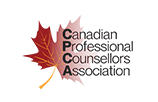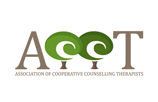
If you’re seeking a career as a relationship counsellor, familiarizing yourself with attachment theory can enhance your understanding of the underlying dynamics at play within a couple’s relationship (Wei, 2008). Attachment theory can be applied to interpersonal relationships as a way of comprehending the emotional connection that couples develop with each other (Stevens, 2019). Attachment theory posits that the style of attachment that individuals develop in their adult relationships is derived from childhood experience (Dashnaw, 2017). At a basic level, when individuals have a partner (or caregiver) who is emotionally receptive, they are enabled to develop a secure attachment and a positive sense of self (Wei, 2008).
As you help couples to work through their problems and communicate with each other during your relationship counselling career, referring to attachment theory in your sessions can provide a framework for explaining unhealthy coping mechanisms or negative relationship patterns (Wei, 2008).
Read on to discover more about attachment theory and how it can inform your relationship counselling practice.
History of Attachment Theory Explained for those in Relationship Counselling Training
Attachment theory was first developed by psychoanalyst John Bowlby, who studied the effects of separation between children and their parents in the mid 20th century (Ackerman, 2021). In his findings, Bowlby discovered that infants instinctively sought closeness to their caregiver to provide safety, and experienced distress when separated (Stevens, 2019). Bowlby coined the term “attachment” in 1958, believing that the behaviour surrounding attachment to a caregiver was rooted in evolution as a mechanism of survival (Stevens, 2019). In order to describe the security represented by the attachment figure, Bowlby developed the term “secure base” (Bowlby, 1988), theorizing that having a “secure base” allows a child to comfortably experience the surrounding world with the confidence that their caregiver will provide them with necessary safety and security (Stevens, 2019).

Ideas developed around attachment during childhood, as described by Bowlby, is a system that directs an individual’s behaviours throughout their lives when it comes to forming and sustaining relationships (Ackerman, 2021). During your relationship counselling career, you can reference attachment theory to understand how an individual’s childhood experiences impact how they behave in adult relationships (Dashnaw, 2017).
The Four Styles of Attachment
Within attachment theory, four different styles of attachment have been developed which can be used to describe adult attachment style in relationships. Within the relationship counselling field, an individual’s attachment style reflects how they learned to be a partner based on their childhood relationships with their caregivers (Dashnaw, 2017).
1. Secure Attachment: When working with couples using attachment theory, your goal as a counsellor is to cultivate Secure Attachment (Dashnaw, 2017). In children who exhibited a secure attachment style, it was found that they had a caregiver who was both responsive and sensitive to their needs (Stevens, 2019). In adult relationships, this translates to a partner who is more likely to be secure in their relationship and cultivates relationships defined by support, independence, understanding, and honesty (Ackerman, 2021).
2. Anxious-Preoccupied Attachment: In adults who experience an Anxious-Preoccupied Attachment style, common relationship behaviours include jealousy and a tendency to be clingy or demanding (Ackerman, 2021). A result of childhood experiences of inconsistent attention (Dashnaw, 2017), an individual with this attachment style may tend to unintentionally push their partner away in their desperation for affection (Ackerman, 2021).
3. Fearful Avoidant/Dismissive Attachment: If a child experienced a caregiver who was seemingly unavailable and tended to disregard their emotional needs, their attachment style as an adult may be characteristic of Fearful Avoidant/Dismissive Attachment (Stevens, 2019). In relationships, adults with this attachment style may fear getting too emotionally attached to their partner, believing that they can only rely on themselves (Dashnaw, 2017). This can manifest in emotional avoidance and withdrawal from one’s partner (Dashnaw, 2017).
4. Disorganized Attachment: When a child has never felt secure in the presence of a caregiver, they may develop a Disorganized Attachment style in their adult relationships (Stevens, 2019). Often, these individuals experience challenges in feeling safe or comfortable within a relationship, making it difficult for them to form meaningful and healthy relationships (Ackerman, 2021).

How an Understanding of Attachment Theory Can Inform Your Relationship Counselling Practice
After finishing your relationship counselling training, you can put your understanding of attachment theory to use in helping couples to recognize their attachment styles and work to develop different strategies to meet their emotional needs (Wei, 2008). Throughout your career, attachment theory can be used as a framework to lead couples to an understanding of their respective attachment styles. The influence that the identified attachment style has on a relationship’s pattern can be valuable in the couple’s journey to reconnection and communication. For many, understanding how their childhood attachment patterns have affected their intimate adult relationships is the first step in moving toward a healthier style of attachment (Dashnaw, 2017).
As a relationship counsellor, it’s also important to note that within relationships, individuals’ attachment behaviours will be influenced by those of their partner (Ackerman, 2021). While each couple will be unique, your ability to thoughtfully implement attachment theory will enhance your success as a relationship counsellor in guiding couples to a higher level of understanding.
Thinking about enrolling in relationship counselling courses?
Start your training today with a program at Rhodes Wellness College!
Works Cited:
Ackerman, C. E. (2021, May 12). What is Attachment Theory? Bowlby’s 4 Stages Explained. PositivePsychology.com. https://positivepsychology.com/attachment-theory/
Bowlby, J. (1988). A secure base: Parent-child attachment and healthy human development. New York: Basic Books.
Dashnaw, D. (2017, March 1). Attachment-Based Couples Therapy and Attachment Theory. Couples Therapy Inc. https://www.couplestherapyinc.com/attachment-theory/
Stevens, E. (2019, May). Attachment Theory. Counselling Tutor. https://counsellingtutor.com/attachment-theory/
Wei, M. (2008, October). The Implications of Attachment Theory in Counseling and Psychotherapy. Society for the Advancement of Psychotherapy. https://societyforpsychotherapy.org/the-implications-of-attachment-theory-in-counseling-and-psychotherapy/









